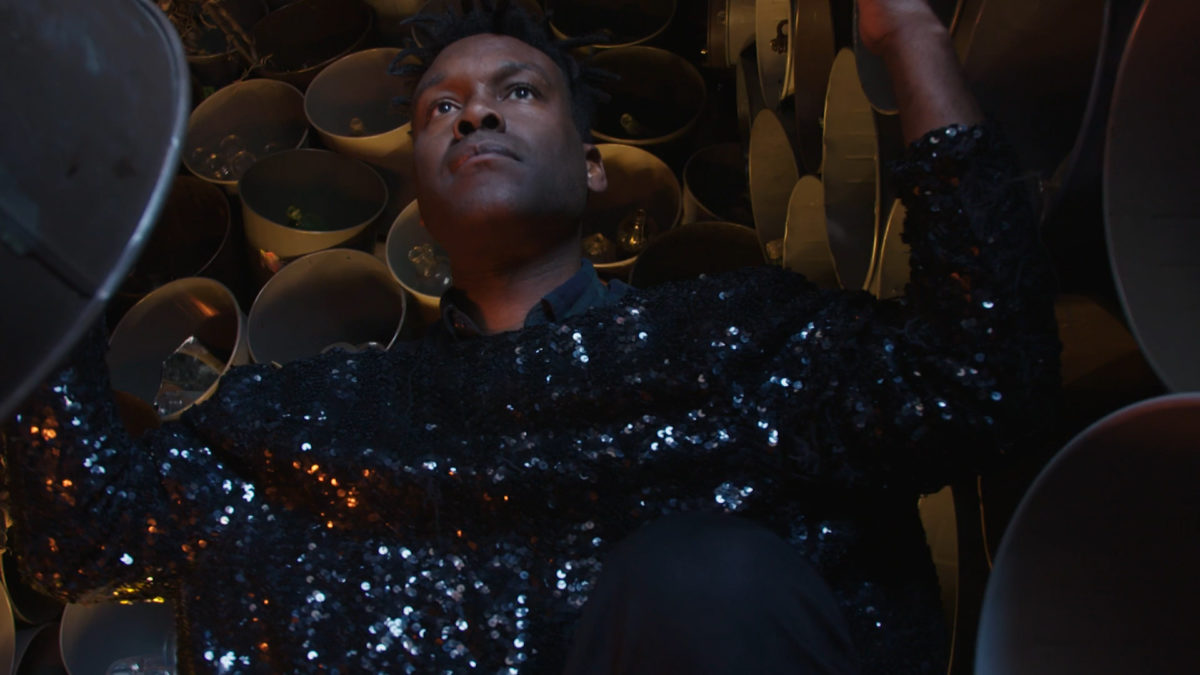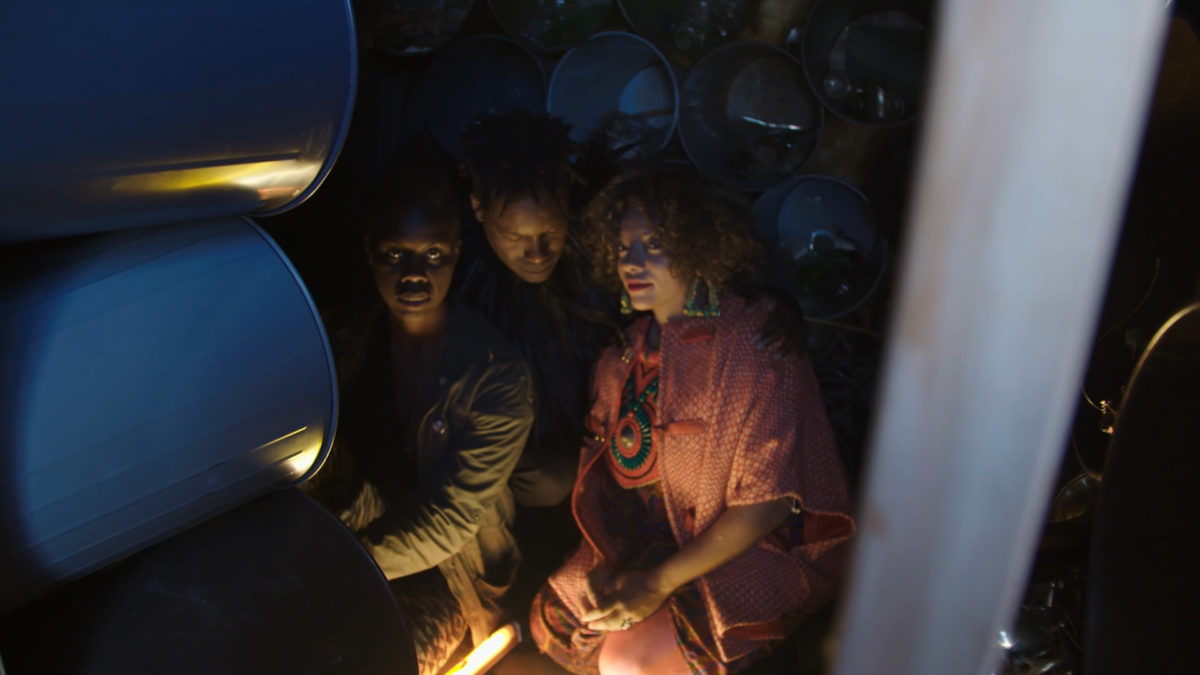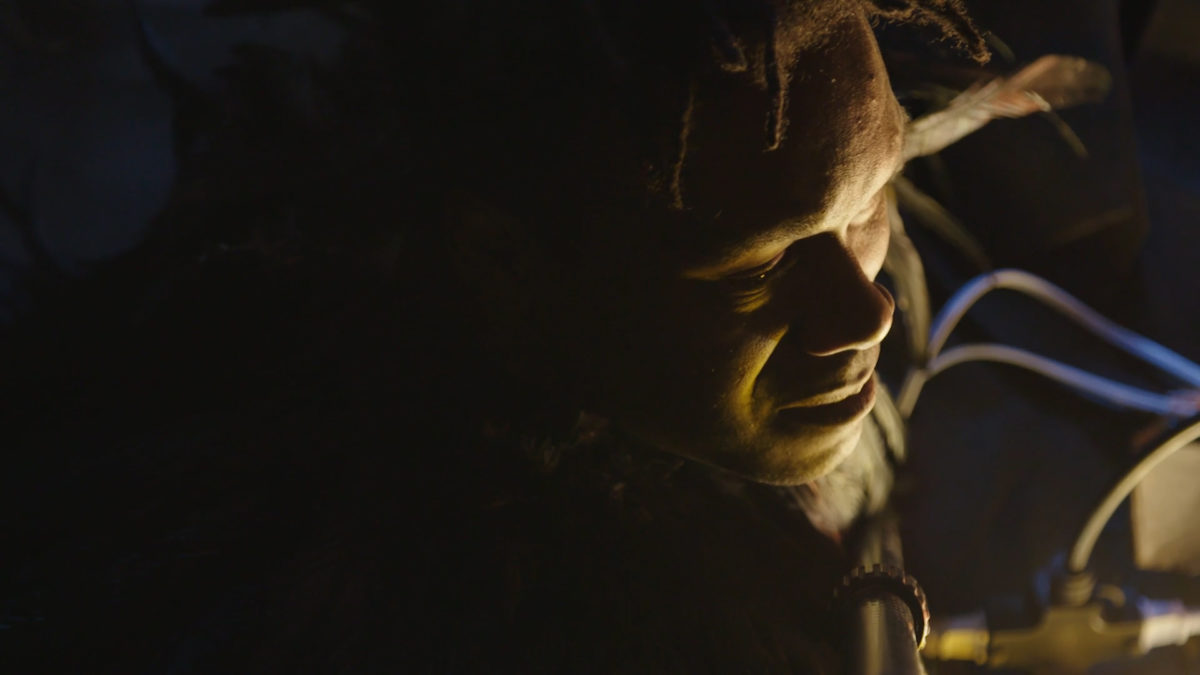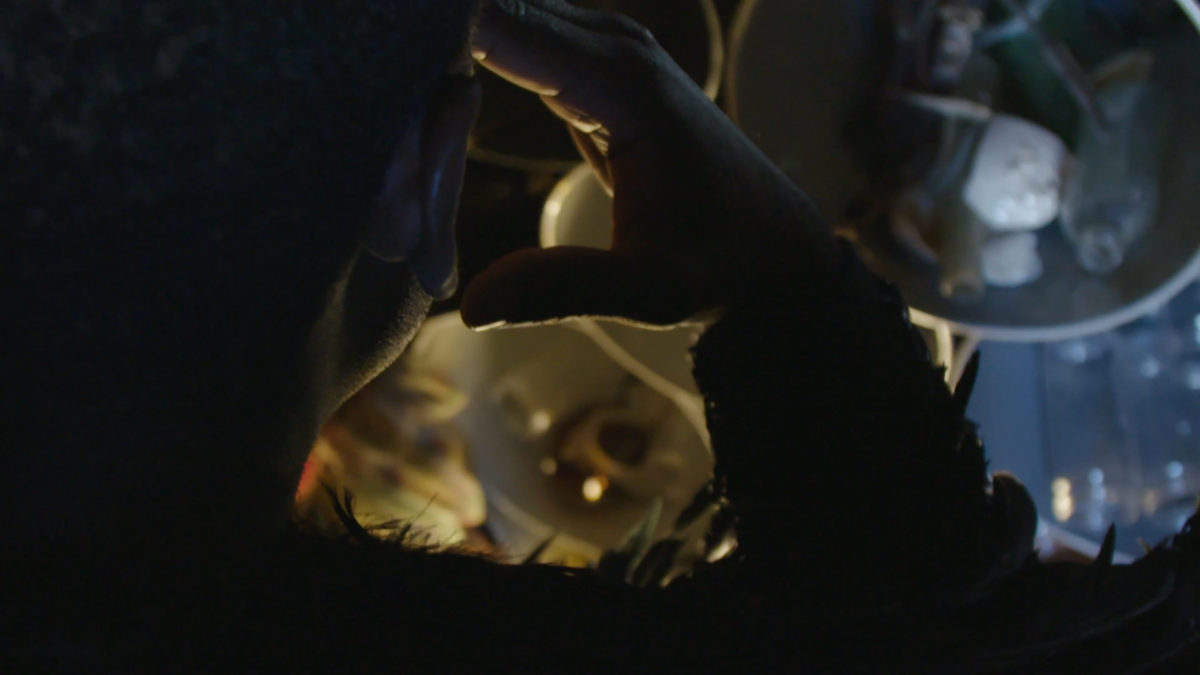The word Ba, represented by a bee-sign in hieroglyphs, meant ‘soul,’ ‘honey’ and ‘bee’ to Ancient Egyptians. This ancient commingling of our fate with bees isn’t lost on MIT assistant professor of theater arts Charlotte Brathwaite, whose new project Bee Boy, connects bee colony collapse and violence against black and brown bodies.
“The bees are where the souls of people form. After you’re death, your soul becomes a bee,” she says, citing an Egyptian belief expressed in a ritual for the dead. “If we really thought about connecting to each other in that way—if you accept that there is a part of me that is in you, and I accept that there is a part of you that is in me, I think the levels of respect that we have for each other and for the environment would grow tenfold. Art is a place to start that manner of thinking.”
At MIT on May 4, 2017, Brathwaite and her collaborators—composer/musician/performer and co-creator Guillermo E. Brown (aka Pegasus Warning), visual artist/designer Abigail DeVille, sound artist Rucyl and associate producer Obehi Janice—will present their work on Bee Boy, now in the early stages of development. There will also be a public conversation with community leaders around the social and environmental justice issues that the project addresses. This event is designed to illuminate the artistic process and engage the community in thinking deeply about these concerns.
In this interview, Brathwaite talks about the collaborative process, Bee Boy’s further development, and the potential for art to give a voice to the voiceless.
Q & A with Charlotte Brathwaite
Could you describe Bee Boy? How did the collaboration begin?
Bee Boy is an artistic response to various forms of violence—the destruction of human lives by institutional injustice and the parallel destruction of the environment, as seen in bee colony collapse disorder.
I’m collaborating with composer/performer Guillermo E. Brown (aka. Pegasus Warning), visual artist Abigail DeVille sound artist Rucyl Mills and associate producer Obehi Janice. Guillermo came to me almost a year ago and said he wanted to do something about bee colony collapse disorder and “Flight of the Bumblebee” by Nikolai Rimsky-Korsakov from the opera The Tale of Tsar Saltan. As we were talking, we started to unpack a connection between the disappearance of the bees and the disappearance of black and brown people around the country and the kind of violence enacted on all kinds of people. If you look at Syria, Ferguson, New York City— systems of violence are causing people to disappear while causing their stories and their legacies to be silenced. As bees disappear, it radically changes our access to certain foods vital to human sustenance. We’re currently living in a system which is causing huge swaths of the population to disappear due to an unjust prison industrial system, gentrification, denial of basic health care, discriminatory housing practices and scarcity of education rooted in liberation. When some lose, we all lose.
We’re very happy to show these very beginning stages of our process here at MIT. When the piece comes to its full fruition, it will feature original music composed and performed by Guillermo and a specially designed instrument, which will live in an installation designed by Abigail allowing the sounds and visual cues to be manipulated in real-time. The piece is simultaneously a lamentation and a celebration of life and love. It’s a meditation on resilience, survival and the urge to transcend oppression. In it’s final form, Bee Boy will honor life, the environment and humankind. It’s about what we need to survive—love. Not the love we see in Disney movies, but as James Baldwin described, “Love is a battle, love is a war; love is a growing up.”
The title plays on the term b-boy. Does that indicate anything about Guillermo’s music for the piece?
The title was inspired by the bell hooks children’s book, Be Boy Buzz. It’s a beautiful story celebrating the complexity of what it means to be a boy, a black and brown boy. I had the book in my collection and showed it to Guillermo.
So the title came up and we loved that it had so many resonances. We all grew up in the eighties, so b-boy culture was part of our lives. Hip-hop culture is a huge part of the way I think about storytelling; it manifests itself in language, in fashion and in critical thinking.
Guillermo’s music isn’t necessarily what one would first categorize as hip-hop. It’s innovative but with definite traces of hip-hop culture inspiration. He’s an eclectic musician whose music is influenced by technology, R&B, hip-hop culture, classical music and many others—he’s a full artist. His music funnels through him and out his fingertips and his voice is quite magical and unique—it’s beyond categorization.
So hip-hop is a social and cultural touchstone?
Exactly. Hip-hop follows in the footsteps of forms that came before it—spirituals, the blues and jazz. Hip-hop is creating something beautiful out of something difficult. In it’s purest form, hip-hop speaks truth to power. It reports on a less than perfect human condition to reveal new modes to overcome violence and oppression.
What phase of work will we see in the workshop presentation? How will you develop the piece further?
What you’ll see at MIT is a sharing of ideas. We are really at the very early stages of developing Bee Boy. As a Creative Capital project we have plans to continue the collaboration and further develop the work.
The first part of our CAST MIT residency happened in October. We had conversations about what it means to make art in these tension-fraught times when so many feel silenced. So part of that time was spent meeting with artists and activists in Cambridge and greater Boston. Some of the people we talked to will be panelists on May 4th. Our hope is that we’ll be able to hear differing points of view and perspectives on the themes of Bee Boy. From there, we’ll continue to develop the next stages of the collaboration. We’re looking at a premiere in 2018/19.
What do you want to gain from the conversation with the community leaders? Is the purpose to engage the public in the conversation? Or is it to give you insights that might feed into the work?
It’s so rare to have an opportunity as an artist to open your process before the work is completed. This residency gives us the opportunity to open up the work and bring our questions, thoughts and concerns to specialists from the community. I believe artists have a responsibility to talk about what they see, what they feel and what they hear in the world around them. I’m not interested in being an artist whose work is siphoned off in an “artist’s corner”. I’m interested in the work I create being for the people, therefore, I need to be in conversation with the people.
In our conversations we discussed the parameters of the work. We decided if we’re doing work about ending violence, we need to involve people who are working on that in their everyday lives from the school principal to activists. Art and life are unquestionably connected for me. I make art because of some burning question I have about life or our human existence that I want to explore with others. We are bringing in people from this community to talk about social and environmental justice from their own unique points of view.
Who is your intended audience for Bee Boy?
We hope to have an outpouring of people from MIT and the local community on May 4th. I’ve spoken to many folks in the community who feel cut off from what’s happening here at MIT; they often don’t know what’s going on here. There are so many great events, programs and talks; I hope this project can serve as a way of opening the doors. This experience has so much to offer, it’s part art, part science, part community conversation and there’s food!
We want all kinds of people to show up, folks dealing with social justice issues, environmental justice issues, the science of bees and the survival of human beings, but also people who enjoy really good music! Guillermo’s music is awesome, he’s an amazing performer. Abigail DeVille is an incredible designer. We hope to create a beautiful event where people can take a peek into the artistic process and share their ideas. Anyone into visual art, music and performance should come out.
Can you talk about the aesthetics of the piece and who influences you? Are you working out of a particular theatrical tradition?
I’m really inspired by Guillermo’s music and Abigail’s visuals and Rucyl’s process of thinking about music and technology.
I started out as a performer in New York working with La MaMa Theatre. It was there that I was exposed to a full on theatrical experience—integration of the body, sound, visuals, ideas and language. Afro-futuristic artists like Sun Ra, my Caribbean heritage, my experiences living in America and abroad, the legacy of the African Diaspora—movement, creation and reinvention—all inspire me.
What are you teaching at MIT this semester? Do social justice issues play any role in the course content?
My work as an educator and artist is steeped in the exploration of identity and how identity plays a part within the given circumstances of the way an artist creates whether they’re conscious of it or not. In my class, All the World’s A Stage: Sociopolitical Perspectives on Performance, we start on the first day of class with a free writing exercise where I ask the students to answer the questions “Who am I? What do I want?” By the end of the semester the questions evolve to “Who do you want to be?” Art has given me a place where I can connect to who I am, what’s important to me and help me re-imagine the world I want to live in. Theatre gives me a place where I can talk about those things in community.
There’s a passage by James Baldwin that I have my students read that sums up my thoughts on the importance of artistic expression. Baldwin speaks of writing and literature, but I think all art making (theater, music, visual art) is an act of writing. “You write in order to change the world, knowing perfectly well that you probably can’t, but also knowing that literature is indispensable to the world…. The world changes according to the way people see it, and if you alter, even by a millimeter, the way… people look at reality, then you can change it.”
—-
Bee Boy Work-in-Progress Showing & Community Discussion
May 4, 2017 / 8:00PM
MIT Kirsch Auditorium / Stata Center, Building 32, room 123 / 32 Vassar Street, Cambridge, MA 02139
Free and open to the public, no tickets required






